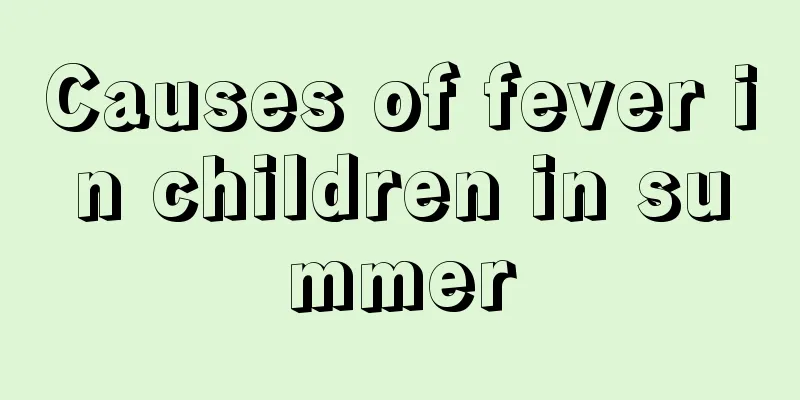Treatment of low-grade fever in children

|
In our lives, it is common for children to have a low-grade fever. This phenomenon brings great trouble to our lives. Vomiting, diarrhea and low-grade fever are often accompanied. Many people seek medical treatment everywhere, but many people do not get timely and effective treatment, which makes our parents very worried about the health of our babies. So what are some good ways to treat children's low-grade fever? Let us learn about the treatment methods for children's low-grade fever. Treatment: New method 1: Supplement with probiotics A US study showed that daily probiotic supplementation for 6 months in children aged 3 to 5 years old can effectively reduce the incidence of fever, runny nose, cough and the use of antibiotics. Even if you have a cold, it can relieve symptoms and shorten the course of the illness. The live bacteria preparations commonly used internationally include Lactobacillus and Bifidobacterium, which are mostly added to milk. New method 2: Do chest rubbing exercise Chest rubbing is a way to improve immunity. Rubbing the chest can activate the thymus cells of infants and young children, making them active and increasing the secretion of thymosin. Thymosin can improve the immunity of infants and young children. The method of chest rubbing is: the child sits or lies on his back, and the parent presses the right palm on the child's sternum, and pushes up and down with moderate force, one up and one down counts as one time, and rub 15 to 30 times in total. Do it once every day when you wake up and before going to bed at night. New Law 3: Avoid Passive Smoking Studies have confirmed that because smoke contains toxic substances such as cyanide, formaldehyde, acetaldehyde, acrolein, etc. that can damage the ciliary tissue of the respiratory system, passive smoking can weaken the ciliary tissue of the respiratory tract of infants and young children's ability to clear external foreign matter, making them susceptible to respiratory diseases. Nicotine in cigarettes can also suppress the immune function of infants and young children and increase susceptibility to respiratory diseases. Therefore, in order to effectively prevent and treat respiratory tract infections in infants and young children, it is necessary to prevent infants and young children from passive smoking as much as possible from the time the mother is pregnant, throughout the breastfeeding period and the entire early childhood. New method 4: Improve nutrition and drink more water According to current research, mild vitamin A and vitamin C deficiency is a common cause of recurrent respiratory tract infections in children. Therefore, eating more fresh colorful vegetables and fruits rich in vitamin C or supplementing with some multivitamin preparations can effectively enhance children's resistance. In addition, drink more water to promote fluid circulation and effectively excrete toxins. The above content introduces to us how to treat children's persistent low-grade fever. We should study these methods carefully so that when our own children have this problem, we can provide timely and effective treatment, avoid the trouble of the virus as soon as possible, and live a healthier life. |
<<: Nursing methods for two-month-old baby with diarrhea
>>: Causes of eye pain in children
Recommend
How many months should babies suck their fingers?
It is a common phenomenon for babies to suck thei...
What are the treatments for children snoring and grinding their teeth while sleeping?
Careful parents will observe that many children s...
Why does a two-month-old baby have blood in his stool?
Nowadays, most families have only one baby, and t...
Nutritious breakfast for primary school students
As we all know, primary school students are our h...
How long does it take for a baby to shed its skin?
Everyone should know that snakes have to shed the...
What is considered precocious puberty?
Some female friends will feel that their babies a...
Can I feed formula milk right after breastfeeding?
When a baby is born, its stomach and intestines c...
Can a newborn baby be bathed every day?
The health of newborns is of great concern to par...
What is the best way to treat nutritional anemia?
Anemia in children has always been a headache for...
What causes leg pain in children?
Every child must experience growing pains when th...
The child keeps coughing
Your child’s cough won’t go away? For parents, th...
Reasons why your baby's urine is red
The birth of every new life will make our parents...
Can a child's nails grow back if they fall off?
Children are rather naughty, and as they move aro...
Pituitary gland stunting
The pituitary gland is a tissue that can secrete ...
Causes of red bumps on children's bodies
Parents are always concerned about their children...









